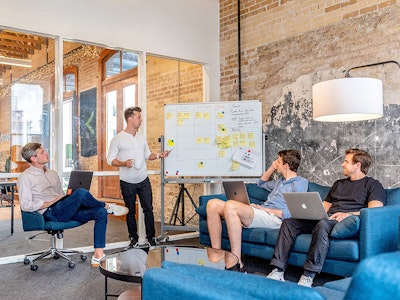Prototyping
Not everything used to be better
In the past, product ideas were often implemented without prior testing, as time was short and investors were easy to find. First experiences with the application could only be made after the launch. This traditional approach involves a high risk, as many improvements affect the development of the code and can therefore only be applied with great effort and cost. The design sprint solves this problem and offers an abbreviation: with the help of fast prototypes and user tests it can be proven whether an idea reaches the customer – without the product having already been implemented at this point in time.
Clients (Excerpt)






Relevant Products

The interdisciplinary collaboration and the methodical approach in the Prototyping Lab enabled me to take a step back in the middle of the development project and focus on the customer again, because after all, we are building the platform for them and we want to make it as easy as possible to use.
Reto Städler, Co-Founder lawoon.com
The five phases of the design sprint
1st understand
First of all, the business idea is analysed both technically and economically. Then the target groups, the performance bound, the success criteria and the competitors are defined.
2nd diverge
In a second phase, various solution approaches for the application are collected and evaluated.
3rd merge
The best solutions are combined and it is determined how the prototype should look and function.
4th prototype
The agreed prototype is implemented. Code is not developed, but only clickable graphics are used. This «dummy» is now presented to potential customers so that they can check the usability and other aspects of the idea.
5th test
The user tests give a well-founded first impression of the application: How do end customers react to the use? Do they like the solution? In this last phase, the first important improvements and adjustments to the product can be made.
Collect learnings before the actual development
The effort for the development of a web application is high, so it is all the more important to test a vision for its feasibility, efficiency, economy and user-friendliness. The design sprint is an approach that has been used by large companies for a long time. A prototype of the vision is created without programming and presented to potential customers for testing and feedback. Numerous learnings are collected before the actual development of the product has begun.
Interesting blog posts about Prototyping:





